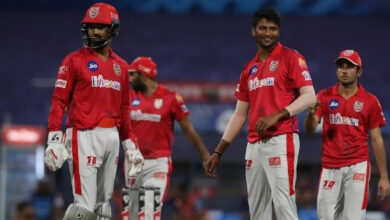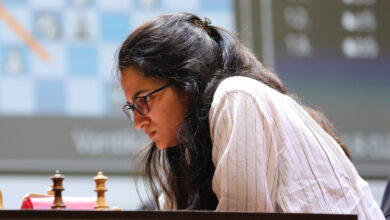With more sixes landing in stands this WPL, should the boundary ropes be pushed back for women’s game? | Cricket News

WHILE DELHI Capitals lost their second successive Women’s Premier League (WPL) final, there was one undeniable bright spot. India opener Shafali Verma, 20, lit up Delhi’s Feroz Shah Kotla Stadium with her 27-ball 44 that included three cleanly struck sixes. Two of these landed just in front of the stands, comfortably clearing the boundary rope.
The Rohtak-born hard-hitter, coached her father to smash cricket balls since she was eight, topped this WPL’s l of those hitting the maximum sixes. Shafali, known for her power game, finished with 20 sixes, far ahead of Smriti Mandhana and Richa Ghosh, who ended up with 10 each.
During the match against Gujarat Giants, Shafali struck a 91-metre six. The other batter to breach the 90-metre mark was Harmanpreet Kaur who struck big during a sensational run chase against Gujarat Giants. The two were among four Indian batters to clear the 80-metre mark.
That Trophy-Lifting Moment! 🙌 🙌
Royal Challengers Bangalore captain Smriti Mandhana receives the #TATAWPL Trophy 🏆 from the hands of Mr Roger Binny, President, BCCI and Mr Jay Shah, Honorary Secretary, BCCI 👏 👏#Final | @JayShah | @RCBTweets | @mandhana_smriti pic.twitter.com/pYrNYkZdca
— Women’s Premier League (WPL) (@wplt20) March 17, 2024
Sixes flying into the stands were a common feature across Bengaluru’s M Chinnaswamy Stadium and Delhi’s Kotla — twoof the venues for the just concluded tournament —leading to questions on whether the boundary rope needs to be pushed out for the women’s game from the next season of the WPL.
Though cricket grounds don’t have uniform dimensions, usually, for women’s games, the boundary ropes are brought in 5 to 10 metres. At Kotla, for instance, the square boundary was 10 metres shorter for the WPL than it usually is for men’s games.
Meg Lanning, captain of the Delhi Capitals team who formerly captained the Australian national women’s team, said, “We could look at potentially having slightly bigger boundaries. There’s so much more power and strength in the game now that people are clearing the ropes pretty easily. It is entertaining and is the same for both sides, so you can’t complain too much.”
It was an aspect that was highlighted Australia’s Rachael Haynes last year, when she was coaching Gujarat Giants.
“At this level, perhaps in seasons to come, it would be nice to see the boundaries pushed out a few metres. The nature of players at this level and what they are capable of means that they are able to clear the boundaries easily,” Haynes had said.
Delhi Capitals’ batter Shafali Verma plays a shot during the Women’s Premier League (WPL) 2024 cricket match between Delhi Capitals and Mumbai Indians, at Arun Jaitley Stadium in New Delhi. (PTI)
As the power-hitting aspect in women’s cricket keeps improving, perhaps the biggest takeaway from the season that concluded on Sunday is how Indians have dominated the six hitting stats. While Shafali led the way, seven of the top 10 six hitters were Indians.
Of the 168 sixes hit in WPL 2024, 98 or close to 60 % were Indian batters. That number stood at around 35% in the first season. And it wasn’t all about power, as Shafali and RCB’s Richa Ghosh, who casually slog-swept a 87-metre six in Bengaluru, exhibited. Jemimah Rodrigues and Smriti Mandhana, too, showed that well-timed shots can clear the fence comfortably.
Rodrigues spoke about employing the ViratKohli school of batting, primarily focusing on finding gaps and getting the timing right — and if it is a six, it’s a bonus.
The tone for the season was set in the first match, when Kerala’s Sajana Sajeevan walked out for her WPL debut with just ball left to be bowled— and hit it for a six, guiding Mumbai Indians to a win. As Mandhana said, “For a girl from Kerala to hit the first ball of her WPL career for a six…I don’t know if I would have ever been able to do that.”







